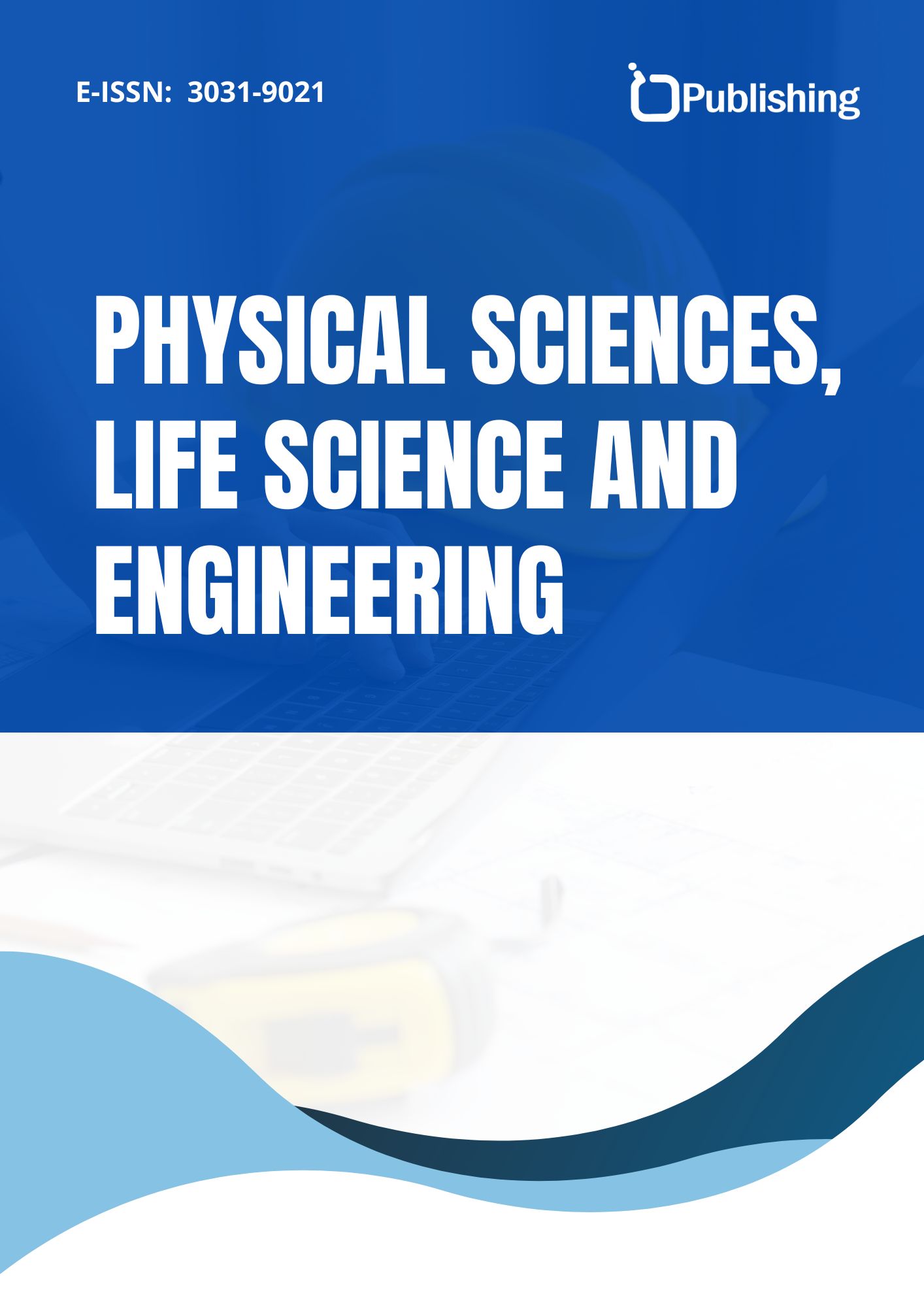Dampak Gaya Belajar Siswa pada Konsep Pemahaman Fisika
DOI:
https://doi.org/10.47134/pslse.v1i1.154Keywords:
Learning Styles, Visual, Auditory, LearningAbstract
The COVID-19 pandemic has impacted, changed and forever changed educational institutions from early childhood learning to the adoption of online education at all levels of education. The need for rapidly deployable or deployable strategies requires educators across disciplines to navigate complex logistics and unique situations by immediately employing a variety of instructional technologies through alternative modalities and pedagogical approaches. Some efforts are tried and true, others are unproven and new. Students and instructors are faced with constraints and limitations related to physical work space, as well as challenges and concerns for mental and physical health; all while trying to meet and exceed a number of expectations. Learning styles can be implemented in various learning activities, for example the visual learning style with pictures, and the auditory learning style by listening to the teacher's explanation and friends' opinions (discussing). Understanding student learning styles can make it easier for teachers and educators to choose learning activities and make it easier for students to receive various information.
References
, J. Y., & Jee, Y. (2020). Analysis of Online Classes in Physical Education during the COVID-19 Pandemic. https://doi.org/10.3390/educsci11010003
Abdullah, M. N. S. (2021). Executive function of the brain and its influences on understanding of physics concept. Trends in Neuroscience and Education, 24. https://doi.org/10.1016/j.tine.2021.100159
Amelia, R. (2020). Application of augmented reality to physics practicum to enchane students’ understanding of concepts. International Journal of Scientific and Technology Research, 9(3), 1128–1131.
Asri, Tolla, I., Jufri, M., Dirawan, & G.D. (2015). The effects of cooperative learning “SAVI” (Somatis, Auditori, Visual and Intelektual) approach to consciousness metacognitive and learning ecosystem at Senior High School 1 Tanete Rilau. https://www.scopus.com/inward/record.uri?eid=2-s2.0-84960396028&partnerID=40&md5=e9004f4a408e143c661c4f82b80b281a
Bawaneh, A. K. (2020). Flipping the Classroom for Optimizing Undergraduate Students’ Motivation and Understanding of Medical Physics Concepts. Eurasia Journal of Mathematics, Science and Technology Education, 16(11), 2–16. https://doi.org/10.29333/ejmste/8561
Bayu, S., Haryadi, S., T., P., Hanifah, N., & D., M. P. (2023). Statistika untuk Penelitian Pendidikan FISIKA: Teori dan Aplikasinya. https://wawasanilmu.co.id/product/statistika-untuk-penelitian-pendidikan-fisika-teori-dan-aplikasinya-penulis-bayu-setiaji-dkk/
Bouabdallah-Haddam, F. D. (2022). Digital Classroom Mise en Scène during Covid-19 Era. https://www.scopus.com/inward/record.uri?eid
Bozzola*, E., Barney, S., Ficari, A., & Villan, A. (2023). Aktivitas Fisik di Era COVID-19 dan Dampaknya Terhadap Kesejahteraan Remaja. https://doi.org/10.3390/ijerph20043275
Chen, Y., Weziak-Bialowolska, D., Lee, M. T., Bialowolski, P., Cowden, R. G., McNeely, E., & VanderWeele, T. J. (2023). Working from home and subsequent work outcomes: Pre-pandemic evidence. https://doi.org/10.1371/journal.pone.0283788
Diansah, I. (2020). Effectiveness of physics electronic modules based on Self Directed Learning Model (SDL) towards the understanding of dynamic fluid concept. Journal of Physics: Conference Series, 1572(1). https://doi.org/10.1088/1742-6596/1572/1/012024
Gusai, O. P., Rani, A., & Yadav, P. (2023). The era of shift from conventional education system to e-learning, virtual learning, and distance education. https://www.scopus.com/inward/record.uri?eid=2-s2.0-85163159310&partnerID=40&md5=02a779c98e5860962e92a51bc79a2b99
Hidayati, Afrizon, R., & Novitri, L. (2023). Analysis of interest in learning physics during the Covid-19 pandemic (Need analysis for the development of physics learning games containing scientific literacy). https://www.scopus.com/inward/record.uri?eid=2-s2.0-85159656528&doi=10.1063%2f5.0122806&partnerID=40&md5=19350890a566b0337da2f9d8796b2a32
Hudha, M. (2019). Science literation ability and physics concept understanding in the topic of work and energy with inquiry-STEM. AIP Conference Proceedings, 2202. https://doi.org/10.1063/1.5141676
Jeffrey Walsh, A., Jessie Krienert, L., & Mcnamara, A. (2023). Online education in the era of rapid adoption: Student and faculty perceptions of technology, individualized impacts, and satisfaction. https://www.scopus.com/inward/record.uri?eid=2-s2.0-85147158761&doi=10.26803%2fMyRes.2022.02&partner
Kusdiastuti, M. (2020). Development of guided inquiry learning tools combined with advance organizer to increase students’ understanding of physics concept. Journal of Physics: Conference Series, 1521(2). https://doi.org/10.1088/1742-6596/1521/2/022014
María, T. M., Irma, R. S., & Juan, C. G. (2023). Analisis Perbandingan Pembelajaran-Pembelajaran Virtual dan Pembelajaran Tatap Muka 2019-2022. https://doi.org/10.54808/CICIC2023.01.72
Mbwile, B. (2023). Exploring the Understanding of Concept Inventories for Classroom Assessment by Physics Tutors and Pre-Service Teachers in Tanzania. African Journal of Research in Mathematics, Science and Technology Education, 27(1), 36–46. https://doi.org/10.1080/18117295.2023.2183607
Mert, A., Yilmaz, Y., & Serkan, R. (2022). Analysis of Physical Activity Levels of Physical Education Teachers during the COVID-19 Pandemic. https://www.asianinstituteofresearch.org/
Nisyah, M. (2020). Inquiry learning model with advance organizers to improve students’ understanding on physics concepts. Journal of Physics: Conference Series, 1521(2). https://doi.org/10.1088/1742-6596/1521/2/022057
Puspitasari, R. (2021). Conditions of learning physics and students’ understanding of the concept of motion during the covid-19 pandemic. Journal of Physics: Conference Series, 1876(1). https://doi.org/10.1088/1742-6596/1876/1/012045
Rajibussalim, R. (2018). Utilising Investigative Science Learning Environment (ISLE) based STEM module for enhancing students’ understanding of Physics concepts. Journal of Physics: Conference Series, 1120(1). https://doi.org/10.1088/1742-6596/1120/1/012086
Richter, R. P. (2018). Glycosaminoglycans in extracellular matrix organisation: are concepts from soft matter physics key to understanding the formation of perineuronal nets? Current Opinion in Structural Biology, 50, 65–74. https://doi.org/10.1016/j.sbi.2017.12.002
Rustana, C. (2019). The analysis of mathematical adaptive reasoning (PAM) and scientific literacy on the 10th grade students’ understanding of physics concepts. AIP Conference Proceedings, 2169. https://doi.org/10.1063/1.5132642
Sagala, R. (2019). The effectiveness of stem-based on gender differences: The impact of physics concept understanding. European Journal of Educational Research, 8(3), 753–761. https://doi.org/10.12973/eu-jer.8.3.753
Taufiq, M. (2012). Remediasi miskonsepsi mahasiswa calon guru fisika pada konsep gaya melalui penerapan model siklus belajar (Learning cycle). https://www.scopus.com/inward/record.uri?eid=2-s2.0-85025105679&doi=10.15294%2fjpii.v1i2.2139&partnerID=40&md5=a1703fc035941d823f8959d35cc86893
Downloads
Published
How to Cite
Issue
Section
License
Copyright (c) 2023 Physical Sciences, Life Science and Engineering

This work is licensed under a Creative Commons Attribution 4.0 International License.










